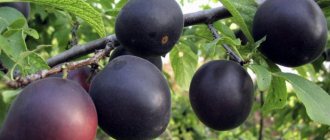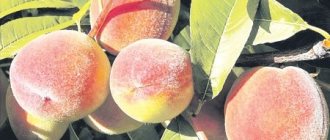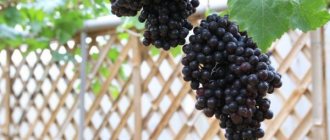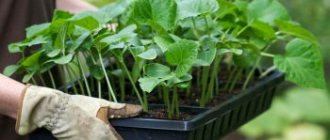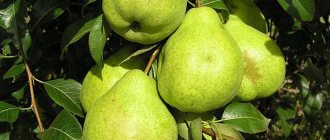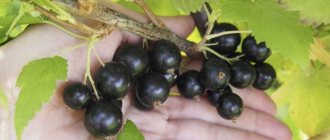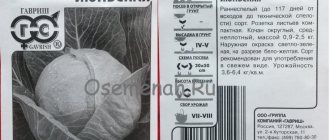History of selection
The Black Velvet hybrid is actually not quite an apricot. It was obtained by crossing the American black apricot and cherry plum. The slow pace of development in spring and the late flowering period, inherited from the latter, contribute to stable yields, since they naturally protect the tree from spring frosts. From apricot, Black Velvet adopted the taste and aroma of the fruit.
The credit for the birth of this variety belongs to G.V. Eremin and A.V. Isachkin, research workers at the Crimean Experimental Breeding Station VNIIR named after. N. I. Vavilova (Russia, Krasnodar region). The Black Velvet apricot variety was isolated by them in 1994.
In 2005 it was included in the State Register.
What is black apricot
Black apricot - a hybrid of cherry plum and apricot
Black apricots are varieties that appeared due to the crossing of apricot and cherry plum. It is interesting that initially this was a spontaneous process, and only after discovering the unusual fruits did scientists begin to study the plant and develop new varieties. The tree is more like an apricot, but it blooms late, like a cherry plum. For most regions of Russia, this is a winning feature, since the flowers will not suffer from spring frosts.
Black apricots are quite frost-resistant for the middle zone, including the Moscow region. But for Siberia and the Urals it is better to choose ordinary varieties.
Tree of medium height, branched. The flowers of the apricot bush (as these varieties are also sometimes called) are white or pale pink. By the time the fruits ripen, they change color from green to purple, burgundy, brown, and dark purple. The skin is fluffy. Sweet, but sour, have a characteristic apricot smell. The bone is difficult to separate from the pulp.
Features of black apricot - video
Advantages and disadvantages - table
| Advantages | Flaws |
| Black apricot is more resistant than ordinary apricot to diseases of fruit trees: moniliosis, clasterosporia, cytospora. | They are inferior in taste to ordinary apricots; the fruits can be watery or fibrous. |
| Apricot soalycha is self-pollinating, so one tree on the site is enough to produce fruit. In addition, it can be pollinated by other related crops - plum, apricot, cherry plum. | The fruits of black apricot are more tart and sour, but due to this they are well suited for making jam. |
| Black apricots tolerate frost well, bloom later than their yellow counterparts, and therefore are not damaged by spring frosts. | They are inferior in yield to their “parents” - apricot and cherry plum. |
| Trees are smaller and lower, making them easier to care for. | The fruits are smaller than those of an ordinary apricot - approximately 20–30 g. |
| Adapt better and faster to external conditions. | In most varieties, the stone is difficult to separate from the pulp. |
Description of culture
The description and photo of the Black Velvet apricot clearly explain why people like to call this hybrid “apricot soybean”. The tree is characterized by medium height (no higher than 4 m), a rounded, slightly flattened crown of medium density.
Its leaves are medium-sized, rich green in color, have an elongated shape and pointed ends. The flowers are large, white or pale pink.
The fruits of this variety are multiple, but smaller than those of most ordinary apricots. Their average weight is 25–35 g, their shape is oval, with a sharp “nose” visible near the stalk. The skin is medium thick, slightly pubescent. In unripe fruits, it is green in color, then acquires a rich brown or dark purple color.
An interesting characteristic of the Black Velvet apricot variety is its unusual, two-colored fruit pulp. Near the seed it is bright yellow, but closer to the skin it turns pinkish.
The taste of the fruit is pleasant, sweet with noticeable sourness, slightly tart, with a bright aroma inherent to apricot. The bone is small. It separates from the dense, juicy, slightly fibrous pulp without much effort.
Initially, the variety was zoned in the North Caucasus region, but it grows quite successfully in central Russia, which has a temperate climate.
This video will help you get a general idea of black apricot:
Attention! When growing Black Velvet apricot in the Moscow region, Volga region and in the eastern regions of the country, it is recommended to form a tree without a trunk or with a low trunk (like a bush).
Description of apricot variety Black Velvet
In recent years, many varieties of native southern crops have become available to Russian summer residents.
When choosing an apricot, cherry, grape or plum seedling, the gardener reasonably pays attention to the characteristics of the variety, which include:
- ability to withstand frost;
- landing site requirements;
- the need for pollinators;
- yield indicators;
- fruit quality.
The description of the Black Velvet apricot variety given by the originator states that the plant is characterized by an average growth rate, high winter hardiness and resistance to common diseases.
Although the variety is approved for cultivation in areas belonging to climate zone 5, experienced gardeners are already harvesting juicy, high-sweet fruits much further north. The culture owes its hardiness to the cherry plum used in breeding dark-fruited apricots. She not only shared winter hardiness with her descendants, but also passed on late flowering periods.
The pinkish flowers of the Black Velvet apricot open when the main threat of frost has passed. This allows the trees to preserve delicate flower buds and form the maximum number of healthy ovaries.
This unusual variety is characterized by medium vigor. As the tree matures, it forms a flat-round crown of medium density. It does not require special thinning. But with high yields, branches bending under the weight need support.
Delicious apricots with pubescent dark purple skin ripen in the last ten days of July or in the first days of August. Unusual fruits weighing about 30 g have juicy, aromatic pulp, which when fully ripe becomes amber-yellow, and pinkish under the blush, and a bright, truly apricot taste. Inside there is a medium-sized, easily detachable bone.
Apricots Black velvet are universal. They are quite dense, so they are suitable for transportation, can be stored for a short time, are good in compotes and jam, and are incredibly tasty fresh.
Characteristics
Thanks to the painstaking work of breeders, the Black Velvet variety managed to embody many of the strong qualities of both apricot and cherry plum.
Drought resistance, winter hardiness
The indicators of winter hardiness and resistance to low temperatures are high in Black Barakhat - in this it is not inferior to frost-resistant varieties of cherry plum. The flowers of this variety of black apricot are practically not afraid of returning spring frosts.
Important! There is an opinion that for the successful development of growth and flower buds, a not very early and cool spring will even be preferable for this apricot variety.
Black Velvet's resistance to summer drought is lower than that of ordinary apricots.
The ideal conditions for a stable, regular harvest from a tree of this variety are a warm, sunny and low-wind summer.
Pollination, flowering period and ripening time
Black Velvet belongs to the partially self-fertile apricot varieties. In order for the yield to be higher, it is recommended to plant potential pollinators near the tree that bloom at the same time:
- common apricot;
- plum (Russian or Chinese);
- thorn;
- cherry plum
Advice! It is optimal to plant 3-4 black apricot trees (possibly of different varieties) on the site if the territory allows.
Black Velvet blooms later than other apricot varieties. Its fruits ripen by the end of July (in the south) and at the beginning of August (in the middle zone).
Productivity, fruiting
Black Velvet has an average early maturity. It usually takes 3–4 years from planting a grafted seedling in the ground to harvesting the first fruits.
This variety is recognized as high-yielding: one tree can produce 50–60 kg of fruit per season. It bears fruit regularly, almost every year.
The Black Velvet harvest is excellently transported and stored. Slightly unripe fruits, placed in boxes in 2-3 rows in a well-ventilated cellar, are quite capable of lying there for 3-4 months.
Area of application of fruits
The purpose of the Black Velvet fruit is universal. They are eaten fresh, frozen for future use, and used in the preparation of sweet desserts. Jam and jam made from the fruits of this variety are distinguished by their excellent taste with tart notes and bright, rich color.
Attention! Learn how to make delicious apricot jam according to all the rules.
Resistance to diseases and pests
Black Velvet, like most dark-fruited apricot hybrids, has increased resistance to moniliosis, clasterosporiosis and cytosporosis, which traditionally affect stone fruit crops.
Advantages and disadvantages
The advantages and disadvantages of Black Velvet apricot can be briefly described as follows:
| Advantages | Weaknesses |
| Increased winter hardiness and tolerance to return frosts | The taste is sour, slightly tart |
| Small, compact tree | Relatively weak resistance to drought |
| High and regular yield | Not very large fruits |
| Excellent transportability and long shelf life of fruits | |
| Universal table use | |
| Resistance to fungal diseases |
Advantages and disadvantages
Apricot has several advantages and disadvantages. Among the advantages noted:
- winter hardiness;
- drought resistance;
- immunity to fungal diseases;
- pleasant taste;
- average ripening time;
- long flowering;
- small bone;
- frost resistance of flowers and ovaries;
- unusual fruit color;
- good keeping quality and transportability.
Gardeners find several disadvantages in this variety: poor separation of the stone from the pulp, average resistance to drought, and the ripening time does not allow growing apricots throughout Russia.
Black velvet begins to bear fruit only in the 3-4th year and requires a pollinator.
Landing Features
Growing Black Velvet apricots on a personal plot basically follows the same rules as those developed for ordinary varieties of apricots.
Recommended timing
The timing of planting Black Velvet in the ground depends on the type of seedling:
- bare-rooted plants are advised to be planted with the onset of spring;
- container - from early spring to mid-autumn.
Choosing a suitable location
The garden plot where the Black Velvet apricot will grow must have the following features:
- good lighting (ideally south facing);
- It is desirable to have a wall of an outbuilding nearby that can serve as a shelter from the wind;
- groundwater must lie at a depth of at least 1.5–2 m from the surface;
- light sandy loam or loamy soil with acidity close to neutral.
This variety does not tolerate well:
- placement in the shade;
- stagnation of water at the roots;
- heavy soils with a predominance of clay and sand.
What crops can and cannot be planted next to apricots?
It should be remembered that apricot has a reputation for being an individualist and is quite whimsical in choosing neighboring plants.
He will react positively to things growing nearby:
- apricots of the same or other varieties;
- potential pollinators (cherry plum, sloe, some types of plums);
- dogwood.
The apricot will not like the close proximity:
- cherries;
- walnut;
- cherries;
- red rowan;
- apple trees;
- pears.
Warning! You should not plant raspberry or currant bushes next to Black Velvet - many pests that attack them pose a significant danger to apricots.
Selection and preparation of planting material
The best option for growing Black Velvet apricot in your own garden is to purchase a seedling at the age of 1–2 years from a specialized nursery.
Signs of a quality seedling:
- the plant is healthy and has an attractive appearance;
- bark without visible damage, dried or peeling areas;
- the root system is living, developed and elastic.
Immediately before planting, the branches of the seedling can be pruned.
Important! The roots should not be cut - it is advisable to simply straighten them.
Landing algorithm
Proper planting of Black Velvet apricot occurs in several stages:
- if there are several seedlings, you should maintain a distance between them (at least 4–5 m);
- the dimensions of the planting hole are 0.8 by 1 m, it is prepared in the fall;
- drainage should be poured onto the bottom (gravel, broken brick, pieces of large branches), then fill the hole with a mixture of soil with humus, peat and sand;
- lower the seedling into the hole, carefully straightening the roots and making sure that the root collar is 5–7 cm above the surface;
- fill the hole with the prepared soil mixture, water the apricot with a bucket of water, mulch the soil with earth or sawdust.
Attention! If the root system of the seedling is highly developed, the size of the planting hole needs to be increased.
Subsequent care of the crop
Caring for Black Velvet apricots does not require excessive effort.
Trim the tree as follows:
- up to 5 years of age, the crown is cut to give it a convenient shape (“bowl”);
- further pruning is carried out in autumn and spring; it is of a regulatory nature and serves to prevent the crown from becoming dense and to prevent diseases.
Attention! Learn more about the intricacies of pruning apricots.
It is recommended to water the Black Velvet apricot 4-5 times a month from May to June. One adult tree will need 1-2 buckets of water at a time. It is recommended to stop watering from mid-summer to prevent a protracted period of shoot growth.
Black Velvet, like any apricot, needs moderate feeding. The general rules for applying fertilizers are:
- in early spring it is recommended to enrich the soil with nitrogen-containing complexes;
- at the beginning of autumn, the best feeding option is superphosphate along with potassium salt;
- In late autumn, organic matter is added to the soil.
Despite its high cold resistance, Black Velvet is still recommended to be covered for winter. Young seedlings can be hidden under a dome of coniferous branches. It is enough to wrap older tree trunks with spandex or paper.
Warning! The covering material must be “breathable” - this will prevent the apricot bark from drying out.
In the fall, it is recommended to pollinate still green leaves with wood ash powder - this will speed up the leaf fall process to better prepare the tree for winter.
To avoid sunburn, the trunks are covered with a layer of garden whitewash enriched with copper sulfate. They do this twice a year: at the end of autumn and at the beginning of spring.
Diseases and pests, methods of control and prevention
Although Black Velvet is highly resistant to many fungal diseases, you should know how to deal with the main ones:
| Disease | Manifestations | Prevention and control |
| Moniliosis | Shoots, leaves and flowers dry out in the spring and become brown, as if “burned.” Fruits rot in summer | Collection and destruction of affected fruits and leaves, destruction of diseased shoots. Treatment before and after flowering with Kaptan-50, Topsin-M. |
| Clusterosporiasis | Round spots on reddish leaves | |
| Cytosporosis | Fading shoot tips, brown streaks on the bark | Removing affected branches. Spraying for prevention in spring and autumn with Bordeaux mixture |
Insect pests can cause considerable damage to the apricot tree and fruits:
| Pest | Appearance and activity | Prevention and control |
| Gall midge | A gray-yellow six-legged “mosquito” whose larvae, gnawing into the buds, bore numerous passages in the wood | Preventive spraying with Fufanon, Karbofos. Timely destruction of affected parts |
| Fruit moth | Brown caterpillars with yellow stripes on their sides. Damages buds, ovaries and leaves of stone fruit trees | Preventive spraying with the same preparations as against gall midges. Glue belts on trunks for catching butterflies and caterpillars |
| Shy leaf roller | Brown warty caterpillars skeletonizing fruit peel and leaves | Preventive spraying with the same preparations as against gall midges |


